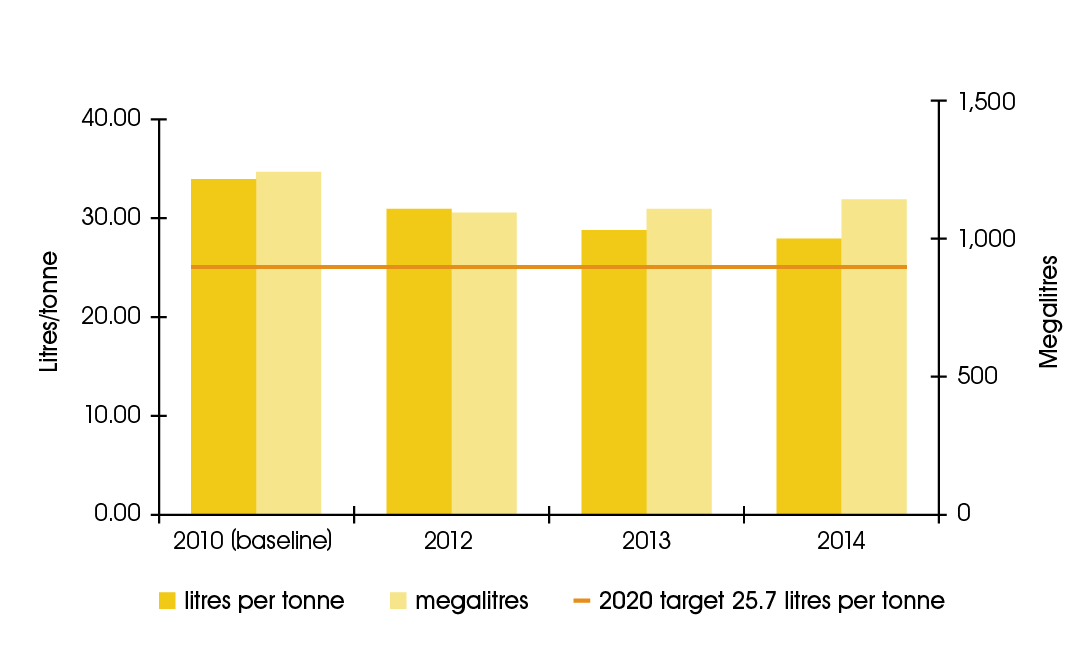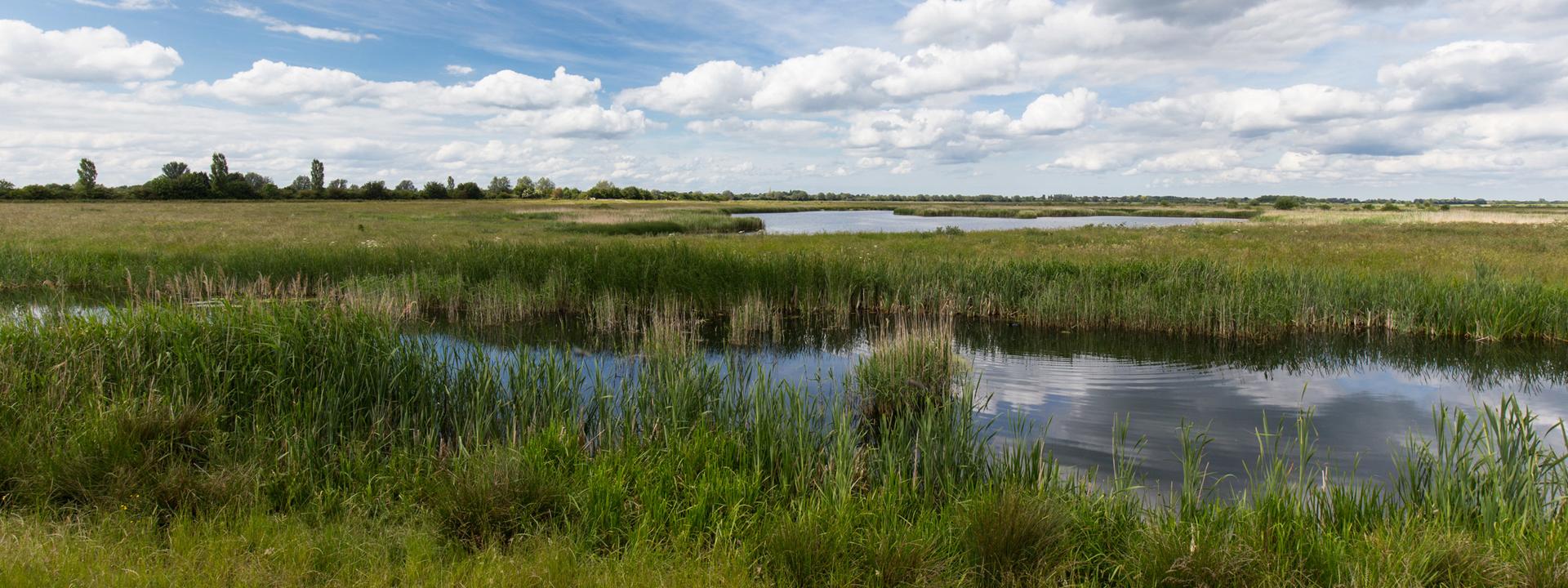Water and biodiversity
-
Our vision:
Our sites become a valuable natural resource in the local environment. We are recognised as a responsible business which uses water wisely.
-
Strategy:
Ensure sustainable use of land, maximising the benefits for biodiversity and ecosystem services and minimising impacts on the availability of water in the natural environment;
-
Action plan:
Identify areas where water use can be reduced through improved metering leading to better identification and repair of leaks; introduce the water hierarchy of ‘reuse, recover, abstract’ before using mains water; roll out the Cement Sustainability Initiative (CSI) water monitoring and reporting system. Establish, publish and monitor biodiversity action plans for all quarries.
-
2020 targets:
Reduce mains water consumption by 25 per cent. All quarries to implement published biodiversity action plans.
Water
Mains water use per tonne falls by three per cent
We use water as an essential raw material in many of our products, particularly clay bricks and concrete. It is also used to provide steam for curing aircrete blocks, to wash sand and gravel, to suppress dust, and to operate lorry wheel washes, which are required on many sites.
Wherever possible, we harvest and recycle water or pump ground water from boreholes, lakes or rivers for our manufacturing processes ahead of using mains water. We also use process engineering to reduce water consumption. All our mains water bills are monitored by Waterscan, who run checks on actual consumption in relation to expected, which has helped identify a number of leaks. Site managers also record monthly water consumption on our database, Entropy.
Mains water use increased slightly during the year, reflecting higher production volumes, but we achieved a three per cent reduction in litres per tonne. This has been driven by a greater awareness of the need to conserve mains water, and by better metering.
Mains water use

-
Water consumption data
Water consumption
2010 (baseline)
2012
2013
2014
Mains water consumption – litres per tonne
34.27
31.81
29.17
28.27
Mains water consumption – megalitres
1,238.16
1,095.67
1,102.29
1,153.24
Total water consumption – megalitres
9,000.06
9,265.64
8,929.42
9,378.54
Total water consumption – litres per tonne
283.38
269.04
236.33
229.89
Business line water consumption – litres per tonne
2010 (baseline)
2012
2013
2014
Concrete
85.99
84.43
77.57
87.66
Building products
251.30
268.25
241.68
229.80
Target: Reduce mains water consumption by 25 per cent across the business by 2020 based on 2010 baseline; reduce the sum of mains and abstracted water for concrete and building products by 10 per cent by 2020 based on 2010 baseline.
Biodiversity and site stewardship
Action plans top 100
We now have biodiversity and geodiversity action plans (BAPs and GAPs) in place at over 90 per cent of quarries that have been active in the last three years and they are all published on our website.
Of sites that were active in 2014, only six do not have biodiversity action plans, and of these two contain quarries owned by third parties. The others are due to be sold. Last year the focus was on updating our existing BAPs in preparation for their publication on line during 2014 and to enable tracking of progress using our Entropy software.
In 2010 we introduced a new indicator looking at quarries with high biodiversity value. These are defined as those located within 500 metres of an SSSI. All of these sites now have BAPs in place. We have set up a database to manage actions contained within all our BAPs.
-
Biodiversity and site stewardship data
Biodiversity and site stewardship
2010 (baseline)
2012
2013
2014
Quarries
102
80
76
70
Quarries with BAPs
53
65
66
64
Quarries including or within 500m of a SSSI
46
40
40
39
Quarries including or within 500m of a SSSI with BAPs
31
38
40
39
Marine BAPs
3
3
3
3
Total BAPs and GAPs
81
102
104
106
Note: Quarries are those that that have been operational in the last three years.


How spade work can help save water
Forget jet washing – sweeping and shovelling are the best ways to clean the yard for relief concrete plant supervisor Mike Lyon. Read more
Insect project wins biodiversity prize
A biodiversity research project carried out at Needingworth sand and gravel quarry in Cambridgeshire won the UK section of the Quarry Life Award 2014. Read more
Freshwater Habitats Trust
During the year we became patrons of the Freshwater Habitats Trust (formerly Pond Conservation).




